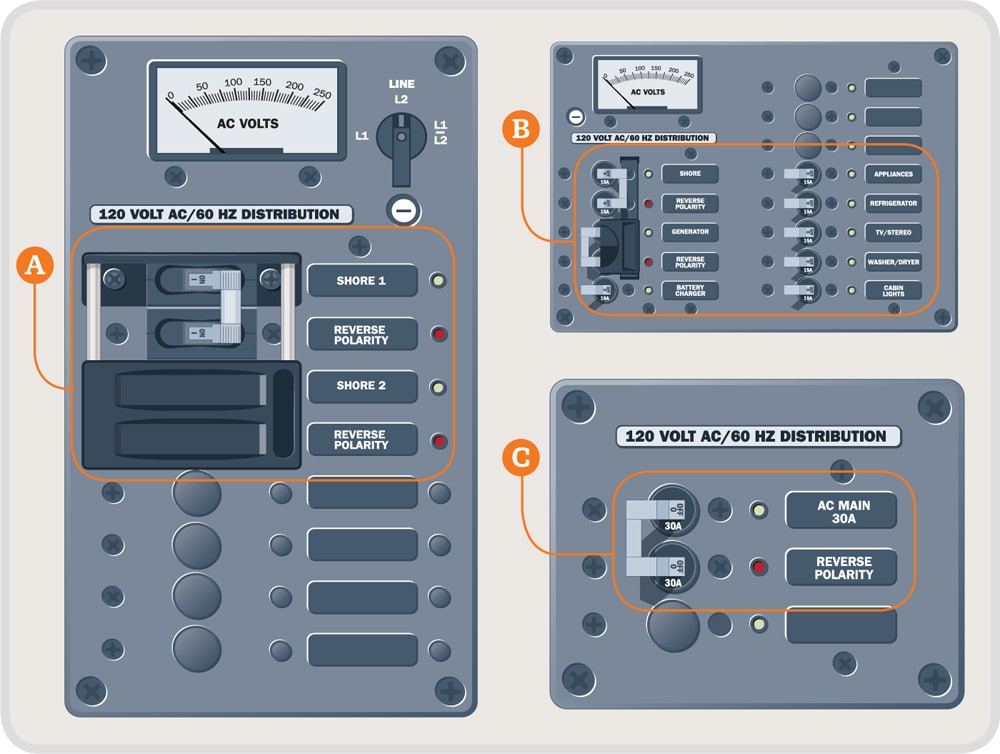
Switch From Generator to Shore Power
Boatbuilders prevent the dangerous situation of AC power being supplied by both shore power and the generator simultaneously with a transfer breaker — two double-pole breakers with a mechanical slide between them. Still, there’s a procedure you should follow that ensures safety when switching from one AC source to another.
1. When switching from shore power to generator, first turn off the shore-power breaker at the distribution panel A, followed by the branch circuits B, and then the main breaker C. This prevents the generator from being immediately loaded upon start-up.
2. Turn the breaker off at the dockside power pedestal and unplug the shore-power cord from the outlet before unplugging at the boat inlet D. That way, if it drops in the water, it’s not a live wire.
3. A generator is another engine, so run the blower before starting. Use the transfer breaker to switch from shore power to genset, and then start the generator and allow it to warm up for five to 10 minutes. Once it’s running smoothly, power on individual branch circuits.
4. When returning to the dock, don’t immediately turn off the generator. Instead, shut down systems and allow the generator a five- to 10-minute cool-down period with no load. “It just adds to the durability and longevity of the genset,” explains Grady White’s Jim Hardin. When the generator is shut down, close its intake seacock to prevent water from being forced up into the cooling system should you head out again.
5. Plug in the shore-power cord at the boat first, before plugging the opposite end into the dockside power outlet. Next, turn on the breaker at the dockside power before switching the source of the house power at the transfer switch. Finally, power on individual circuits.
Three Plug Tips
[1] Keep shore-power cables stored in a designated locker, away from moisture and cleaning supplies. If leaving at a dockside hanger, disconnect the plug and keep it facing down to prevent water intrusion. Dockside breakers should be turned off when not in use.
[2] Dockside power sources vary. Identify the power source(s) at your favored destinations, and buy the corresponding pigtail adapters to keep things running smoothly. A 30A locking receptacle is the norm at most U.S. marinas.
[3] Avoid tight coils; they generate heat. Likewise avoid pinching cable under a door or hatch. Make sure plugs and connectors are secured in their full, locked positions. Tug cords to verify.









